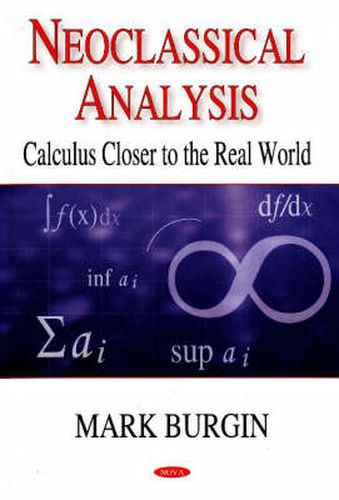Readings Newsletter
Become a Readings Member to make your shopping experience even easier.
Sign in or sign up for free!
You’re not far away from qualifying for FREE standard shipping within Australia
You’ve qualified for FREE standard shipping within Australia
The cart is loading…






Neoclassical analysis extends methods of classical calculus to reflect uncertainties that arise in computations and measurements. In it, ordinary structures of analysis, that is, functions, sequences, series, and operators, are studied by means of fuzzy concepts: fuzzy limits, fuzzy continuity, and fuzzy derivatives. For example, continuous functions, which are studied in the classical analysis, become a part of the set of the fuzzy continuous functions studied in neoclassical analysis. Aiming at representation of uncertainties and imprecision and extending the scope of the classical calculus and analysis, neoclassical analysis makes, at the same time, methods of the classical calculus more precise with respect to real life applications. Consequently, new results are obtained extending and even completing classical theorems. In addition, facilities of analytical methods for various applications also become more broad and efficient.
$9.00 standard shipping within Australia
FREE standard shipping within Australia for orders over $100.00
Express & International shipping calculated at checkout
Neoclassical analysis extends methods of classical calculus to reflect uncertainties that arise in computations and measurements. In it, ordinary structures of analysis, that is, functions, sequences, series, and operators, are studied by means of fuzzy concepts: fuzzy limits, fuzzy continuity, and fuzzy derivatives. For example, continuous functions, which are studied in the classical analysis, become a part of the set of the fuzzy continuous functions studied in neoclassical analysis. Aiming at representation of uncertainties and imprecision and extending the scope of the classical calculus and analysis, neoclassical analysis makes, at the same time, methods of the classical calculus more precise with respect to real life applications. Consequently, new results are obtained extending and even completing classical theorems. In addition, facilities of analytical methods for various applications also become more broad and efficient.